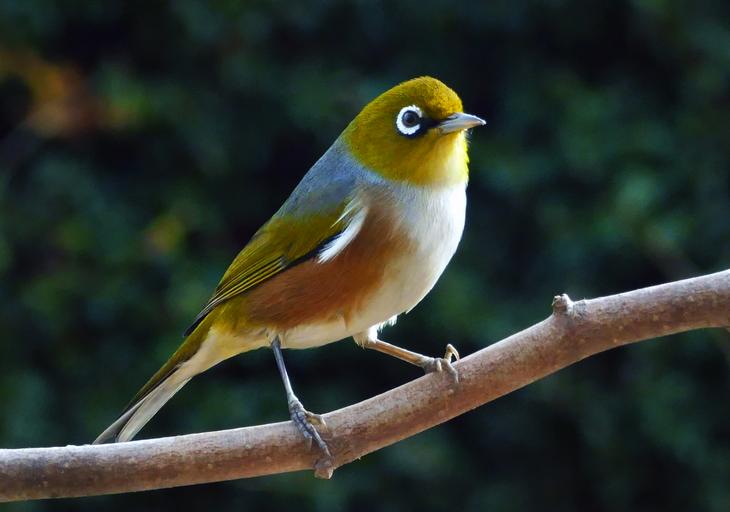MAKE A MEME
View Large Image

| View Original: | Silver_eye._NZ..jpg (3745x2625) | |||
| Download: | Original | Medium | Small | Thumb |
| Courtesy of: | www.flickr.com | More Like This | ||
| Keywords: birds nature silver eyes silvereyes wax eyes waxeyes lumix fz1000 lumixfz1000 feathers public domain dedication (cc0) publicdomaindedicationcc0 free photos freephotos animal outdoor Silvereye (Zosterops lateralis) were self introduced in the 1800s and now have a wide distribution throughout New Zealand. They have made the forest their home and are now among the most common bird in suburbia too. The silvereye has a wide distribution throughout New Zealand. They can be found from sea level to above the tree line but they are not abundant in deep forest or open grassland. Slightly smaller than a sparrow, the silvereye is olive-green with a ring of white feathers around the eye. Males have slightly brighter plumage than females. They have a fine tapered bill and a brush tipped tongue like the tui and bellbird. Silvereyes mainly eat insects, fruit and nectar. The silvereye was first recorded in New Zealand in 1832 and since there is no evidence that it was artificially introduced, it is classified as a native species. Its Māori name, tauhou, means 'stranger' or more literally 'new arrival'. Silvereye (Zosterops lateralis) were self introduced in the 1800s and now have a wide distribution throughout New Zealand. They have made the forest their home and are now among the most common bird in suburbia too. The silvereye has a wide distribution throughout New Zealand. They can be found from sea level to above the tree line but they are not abundant in deep forest or open grassland. Slightly smaller than a sparrow, the silvereye is olive-green with a ring of white feathers around the eye. Males have slightly brighter plumage than females. They have a fine tapered bill and a brush tipped tongue like the tui and bellbird. Silvereyes mainly eat insects, fruit and nectar. The silvereye was first recorded in New Zealand in 1832 and since there is no evidence that it was artificially introduced, it is classified as a native species. Its Māori name, tauhou, means 'stranger' or more literally 'new arrival'. | ||||